Causes of wheat rust and methods of dealing with it
According to experts, rust is considered one of the main and most dangerous diseases of wheat. All aerial parts of the plant are affected: leaves, stems, ears. There are many reasons for infection, so for the safety of crops, specialists are constantly developing new effective methods of dealing with a harmful pathogen.
The content of the article
Features of the disease
Wheat rust is caused by the basidial fungus Puccinia recondita... The disease manifests itself in the form of yellow, black and brown small blisters (pustules) on the leaves and stems of the plant, in which the spores of the fungus develop.
Initially, the pustules are covered by the epidermis.... As the disease progresses, they burst and emit a yellow or orange powder - spores that disperse to nearby plants and infect them.
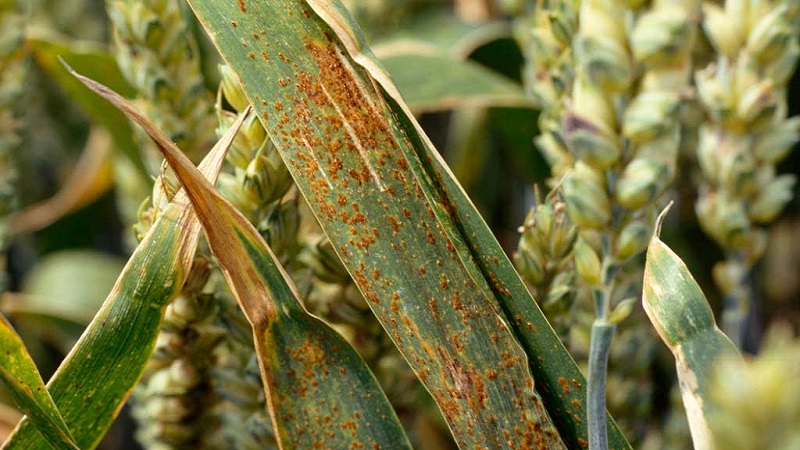
What is dangerous for wheat
Outwardly, the spores resemble rust. They interrupt the process of photosynthesis in plant tissues and lead to a decrease in the ability of wheat to produce grain.... Entering the cells of a plant, the fungus-pathogen does not kill it, but begins to take away the nutrients necessary for development and growth.
Such destructive processes cannot but weaken the culture. Besides:
- Damaged leaves die off prematurely, and the stems break and lie down.
- The root system is poorly formed, therefore it does not provide the plant with moisture enough.
- Due to the rupture of the epidermis in the affected areas, the water and respiratory balance of the plant is disturbed.
- The culture loses drought and frost resistance.
- The development of grain in the ear is delayed - its quantity and weight are significantly reduced.
The infected plant becomes weak, punyaccordingly, the yield also decreases.
Interesting on the site:
Soft wheat: how it differs from hard wheat and where is it used
Kinds
The most common and dangerous types of wheat rust include:
- stem (linear);
- leaf (brown).
Stem can infect up to 300 species of cultivated and wild-growing cereals... First of all, stems and internodes are affected. Later, it affects the sinuses (sheaths) of the culture, less often the leaves and parts of the ear.
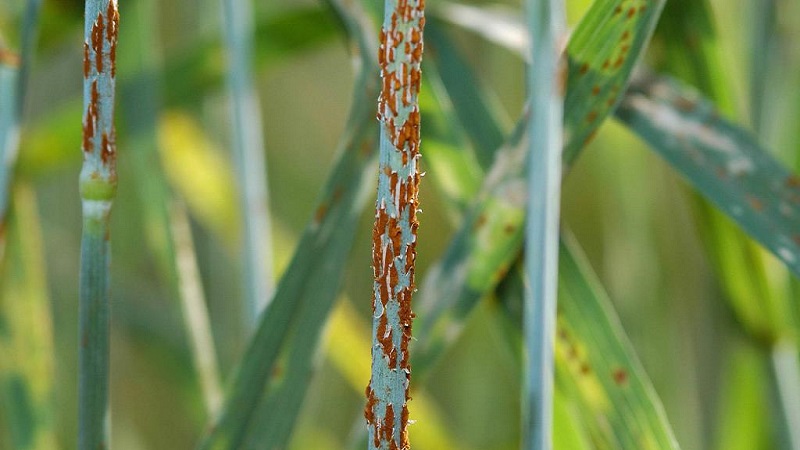
Leaf rust infects winter and spring wheat, and other cereals... Mostly leaves and axils of plants are affected. During the growing season of crops, several generations of fungal spores develop, which, scattering, infect an increasing number of plants, therefore they can cause massive damage to crops.
Leaf rust the greatest damage is caused by winter wheat... Crops infected in autumn do not tolerate winter well. With the onset of spring, there is a noticeable difference between rare, rusty plantings and healthy ones that have safely endured the winter period.
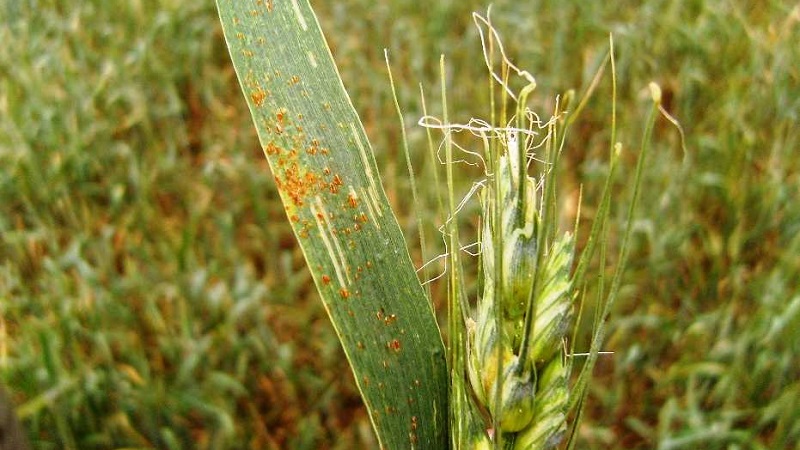
Causes of occurrence
The main reason for the widespread rusting of wheat is high viability of fungal spores and their rapid and extensive prevalence.
Sources of infection and favorable conditions for development
Sources of the spread of the disease are plant debris, infected weeds or forage grains and intermediate, in particular basilisnik, hazel.Additional foci of infection can be infected rye, barley, bluegrass, meadow fescue and other wild grasses. Also, spores are carried in by gusts of wind from distant highly infected crops.
On the infected stubble, not only stem and leaf spores survive winter, but also many other types of rust, which in the spring cause a new wave of disease.
Important! Many varieties of the fungus also develop on the grass carrion during the period from harvesting to the emergence of winter crops. Therefore, fallen grains pose a great danger to winter crops and act as an intermediate carrier of infection.
Fungus-friendly conditions also contribute to the spread of rust:
- The presence of an infectious background (carrion, infected stubble, plant residues, etc.).
- Early plantings of winter and late spring wheat promote the development of stem rust.
- Application of high doses of nitrogen fertilizers.
- Cool and humid weather in August and September, mild winters, cool springs and first decade of summer.
- Intense precipitation in the first half of the growing season and during the heading period.
- The presence of drip moisture (dew or evening rain).
- Density and contamination of crops with cereal weeds.
Wheat rust fungus is capable of infecting crops over a wide temperature range - from + 2 ° С to + 30 ° С. The maximum rate of development and spread of the disease is observed at + 15 ... + 24 ° C.
Important! More often outbreaks of infection occur after prolonged rains at an air temperature of + 20 ... + 25 ° С.
Geography of distribution
The mushroom is ubiquitous, therefore, the cultivation of wheat is always fraught with the danger of mass contamination of crops. In the northern regions and in Siberia, where the summer is not so hot, spores persist better, therefore, the risk of the disease increases.
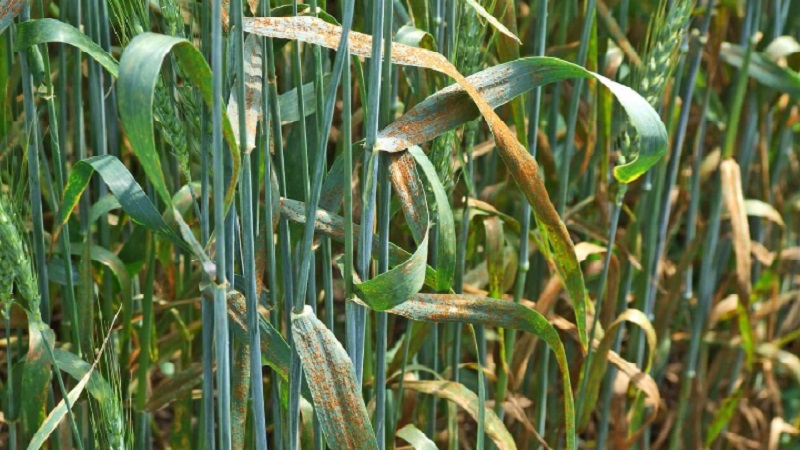
Linear stem rust of cereals is especially common in regions with humid, warm climate. The most affected areas are the North Caucasus, the Far East, the Baltic States, Western Ukraine and Belarus.
Wheat leaf or brown rust is found in all regionswhere there are wheat fields.
Read also:
Symptoms of defeat
Stem rust appears on cereals usually after flowering, less often in autumn or spring on seedlings of winter crops... Externally, the disease is determined by longitudinal stripes or lines that are formed from the fusion of clusters of unicellular orange urediospores on the affected plant organs. Therefore, stem rust is also called linear. The disease causes increased transpiration (evaporation of moisture) and leads to drying and dropping of leaves.
Leaf rust appears as rusty-brown, rounded or oval, dusty, chaotically located pustules 1-1.5 mm in size. They do not merge into solid spots, as with a stem infection. Later, the pustules turn black with a glossy shade. With a strong development of the disease, almost the entire leaf plate is affected, a burn occurs and the leaves curl.
The first symptoms of the disease on winter crops can be seen in the fall.however, they become clearly visible in the spring before the heading stage. The peak of rust development falls on the period of milky-wax ripeness of the grain.
Control methods
There are three main types of struggle with this disease.
Biological
These methods of protection are absolutely harmless from the point of view of ecology (as opposed to chemical ones). Checklist:
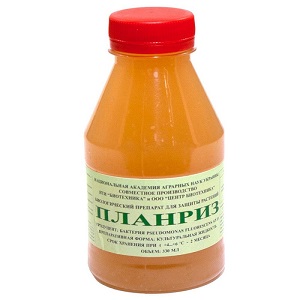 Creation of rust resistant varieties by specialists.
Creation of rust resistant varieties by specialists.- Analysis of plant and soil samples from an infected field to identify a specific strain of pathogens and the selection of appropriate fungicides.
- Population of the soil with beneficial microflora using microbial preparations "Fitostim", "Agrovitastim".
- Measures for the decomposition of infected plant residues using the bacterial preparation "Stimix", which suppresses the pathogenic microbiota, preserving all the valuable trace elements of the stubble in the soil.
- Regular monitoring by analyzing samples of soil microflora for the timely prevention of fungal infection.
At the initial stage of the development of the disease, it is necessary to spray crops biological preparations "Planriz" and "Agat".
Agrotechnical
Main measures to combat rust:
- Destruction of sources of infection.
- Spatial isolation of spring and winter wheat crops. Infected winter crops are the focus of the disease, from where it spreads to spring crops.
- Replacement of varieties with more resistant ones: wheat Timofeeva, Bezostaya 1, Bezostaya 2, Caucasus.
- The introduction of additional doses of phosphorus-potassium fertilizers for grain crops, which increase the resistance of the crop.
- Top dressing, accompanied by loosening of row spacings, is effective for planting health.
- Optimal sowing dates for spring and winter wheat. In the European part of Russia, the best results are obtained with early sowing of spring crops (more often in April), when the soil warms up to + 5 ... + 6 ° С. For winter wheat, favorable conditions for sowing come when the average daily air temperature is set at + 14 ... + 15 ° С (approximately from September 25 to October 5). In this case, the plants have time to go through the early stages of development in conditions unfavorable for rust.
- Timely grain harvesting. At a later date, overripe grain, which may contain infected specimens, spills out of the ears and remains on the soil, and in the spring it becomes a source of infection.
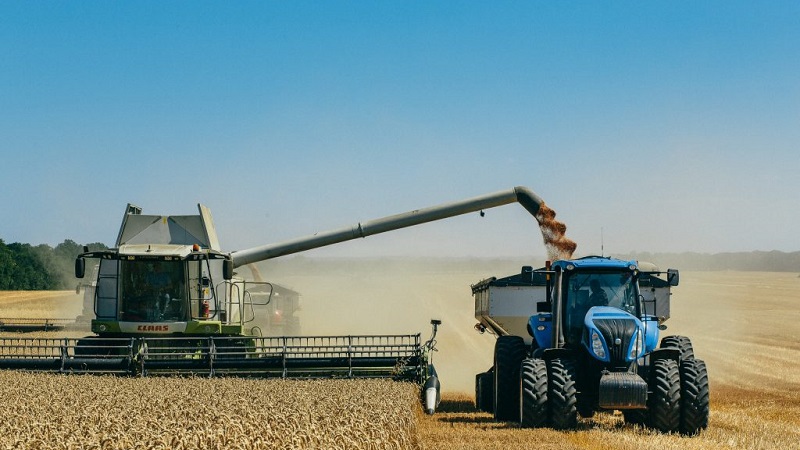
Chemical
If signs of rust are detected, the crops are sprayed with fungicides from the aircraft:
- strobilurins: "Uniform", "Altruist", "Triaktiv", "Amistar".
- triazoles: Tebuconazole, Tetraconazole, Propiconazole.
- benzimidazoles: "Fundazol", "Benazol", "Alternative", "Benomil".
As a result of exposure to fungicidal preparations, fungal spores lose germination ability.
Preventive measures
In order to prevent the development of infection caused by fungi of stem and leaf rust, measures are taken:
- The condition of the leaves of plants is regularly examined, especially during the period of ear formation.
- Seed material is etched with fungicides "Baktofit", "Fitosporin-M", "Dividend Star" and "Viatsit". The procedure increases the resistance of the culture, reduces the harmfulness of rust and other diseases.
- Observe the rules of crop rotation. Favorable predecessors are legumes (clover, alfalfa, peas) and row crops (corn, cotton, potatoes, sugar beets, etc.).
- Rust-resistant wheat varieties are used: Brigantina, Obriy, Moskovskaya 35, etc.
- Stubble plowing is carried out (during the harvest, the top layer of the soil is turned over), followed by autumn plowing of the soil.
Conclusion
Despite the fact that rust does not destroy the grain itself, the damage from it is extremely great. Infection of cereals occurs throughout the growing season, which significantly affects the yield. Only by studying the causes of the appearance of infection in a certain area and competently compiling a set of measures to combat the fungus, you can get rid of the dangerous pest of winter and spring wheat.